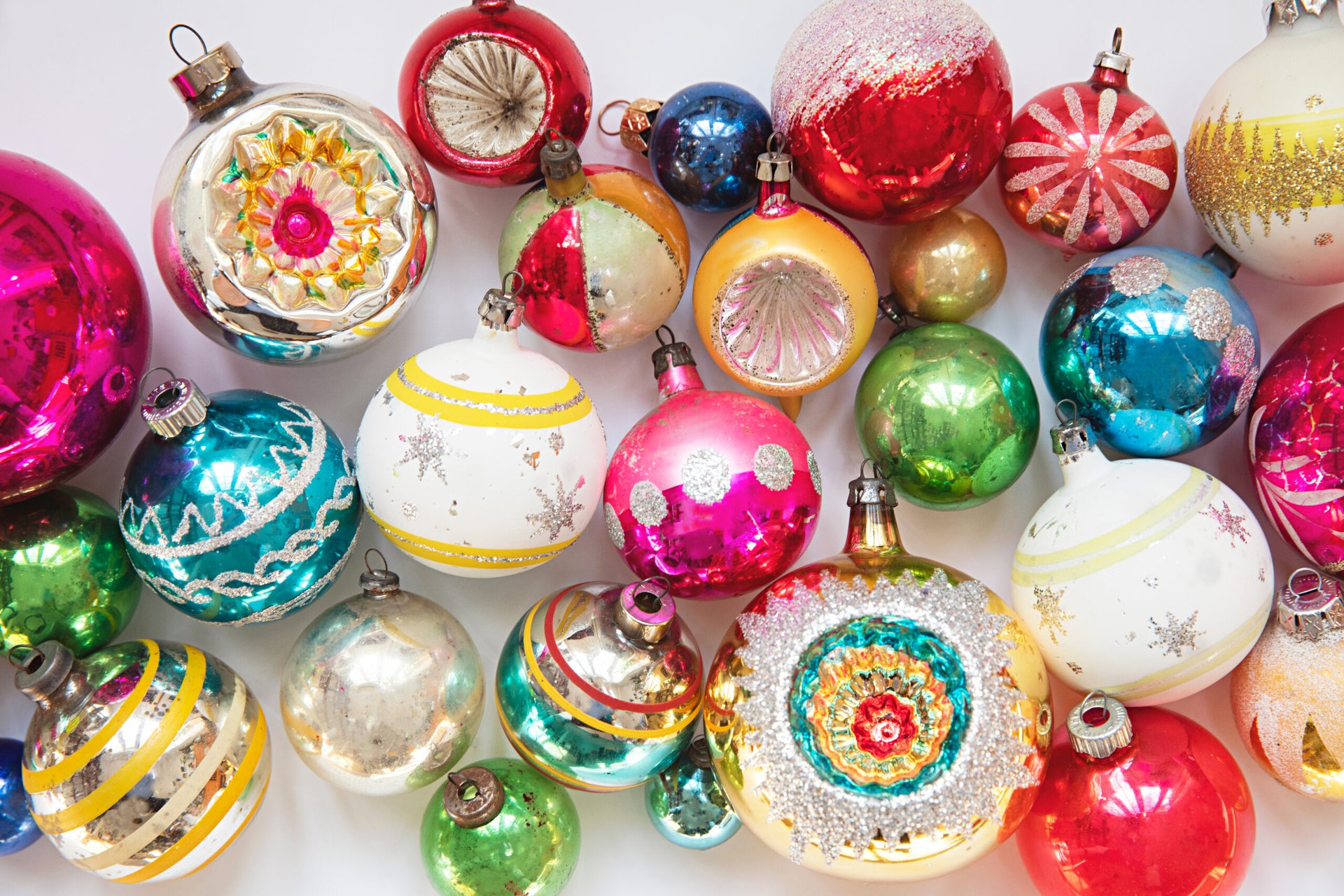
Shopping thrift stores, flea markets and estate sales can be overwhelming. With the sheer volume of stuff, how do you know where to start? How do you spot gems amid all the junk?
As a professional reseller who has been combing through thrift stores for the better part of 30 years, I can help. If you’re ready to cut your shopping time in half, score bigger bargains or walk away with brag-worthy finds you can flip for cash, read on.
From hard-to-find household items to resale moneymakers, everything featured in my “Thrift Shop Like a Pro” series qualifies as a BOLO (“be on the lookout” for) item. When you find it, buy it!
Featured find: Shiny Brite Christmas tree ornaments
For my secondhand dollar, Shiny Brite Christmas tree ornaments are the very best. There’s nothing more thrilling than pulling a delicate glass ornament from a bin of modern plastic baubles, or even better — finding a whole box of Shiny Brites carefully wrapped in their original tissue paper.
Shiny Brite was the brainchild of German-American immigrant Max Eckardt. Eckardt noticed that F.W. Woolworth (of Woolworth’s department store fame) was importing large quantities of hand-blown glass ornaments from Germany. As an importer of ornaments himself, Eckardt understood that an American-based manufacturing location was essential. With World War II brewing, Europe was destined to face shortages of all raw materials.
He partnered with Corning Glass Co. and launched Shiny Brite, a brand name that referenced the silver-nitrate coating that made each multicolored bulb permanently shiny and bright. Today, we call this type of glass mercury glass because the mirror-like quality of the silver nitrate resembles liquid mercury.
Eckardt’s ornaments were an immediate hit. Woolworth began placing regular orders, and by 1940, Corning was producing 300,000 Shiny Brites per day.
Why buy it?
For those who celebrate Christmas, Shiny Brite ornaments lend a bit of nostalgia to classic American holiday decor. The ornaments look stunning on any kind of tree — from natural pine to funky mid-century aluminum.
Like most vintage glass ornaments, Shiny Brites are extremely thin and fragile. With each passing year, breakage makes surviving pieces scarcer and more valuable. If you’re looking for unique, heirloom-quality ornaments that will be treasured generation after generation, add these to your collection.
If you’re looking to make extra money by reselling secondhand finds, Shiny Brites make the perfect flip. They photograph well, are relatively inexpensive to ship, and the profit margins can be amazing.
Recently on eBay, a box of 12 vintage Shiny Brite ornaments sold for $97.50, and this box of four ornaments sold for $118.50. Shiny Brite is shining bright on Etsy, too. This tree-topper with original box sold for $83. Prices like these almost make me believe in Christmas miracles again!
What to look for
In the market for some holiday bling? Keep an eye out for Shiny Brite. Though individual ornaments weren’t marked, the boxes were. The most common logo features “SHINY BRITE” in all caps against a field of sunburst flares. The wordmark is arched and a graphic of an ornament separates the words “SHINY” and “BRITE.”
If you’re buying to resell, pay special attention to these details:
- Design complexity: Though orbs were the standard, Shiny Brite pushed the limits of form. Ornaments shaped like pine cones, acorns and paper lanterns and those with faceted indentations are highly prized.
- Condition: The most common problems with antique glass ornaments are material loss, such as flaking or fading of painted embellishments; chips around the rim or “topper”; and cracks. Any of these issues will negatively affect resale value.
- Packaging: Collectors love packaging. Shiny Brites in their original cardboard boxes typically sell for 10% to 20% more than those without.
- Manufacturing location: If you find a set of ornaments in their original box, check the manufacturing location. Prior to Eckardt’s partnership with Corning, Shiny Brites were made in Poland and West Germany. These early imported pieces sell for a premium.
Reissue alert: Designer Christopher Radko licensed the rights to the Shiny Brite brand in the 1990s. Radko’s contemporary line includes reissues of original designs along with new forms. Though these ornaments are well-made and collectible in their own right, they are not vintage Shiny Brites.





Add a Comment
Our Policy: We welcome relevant and respectful comments in order to foster healthy and informative discussions. All other comments may be removed. Comments with links are automatically held for moderation.